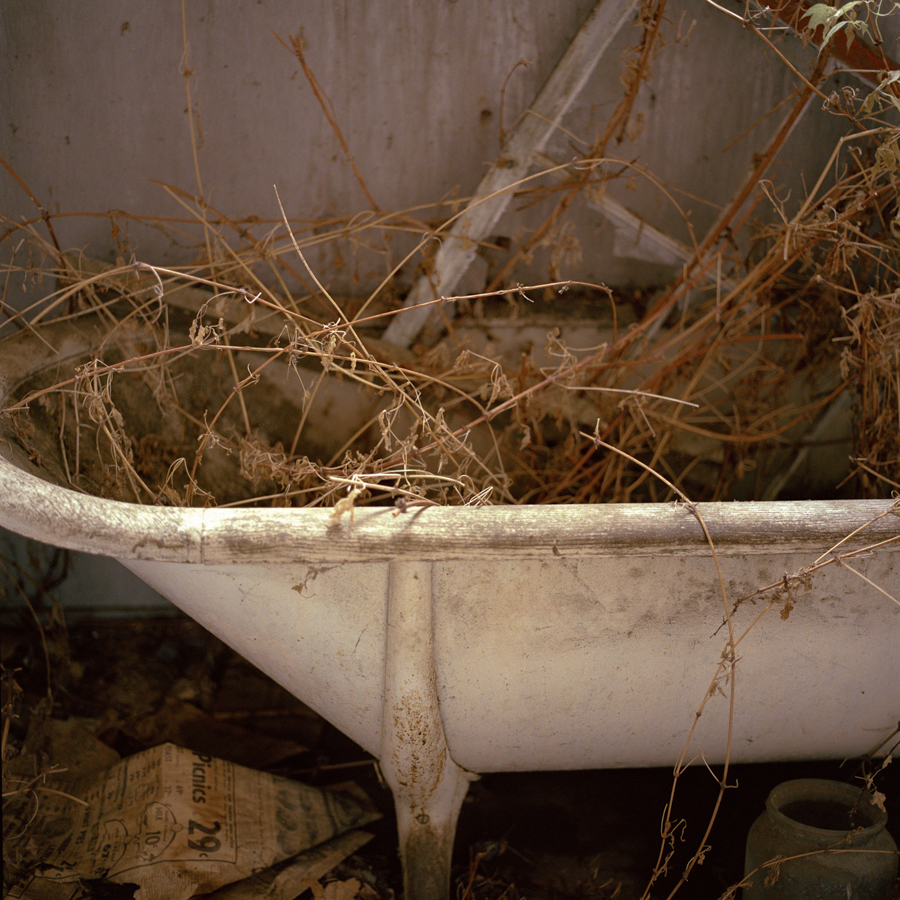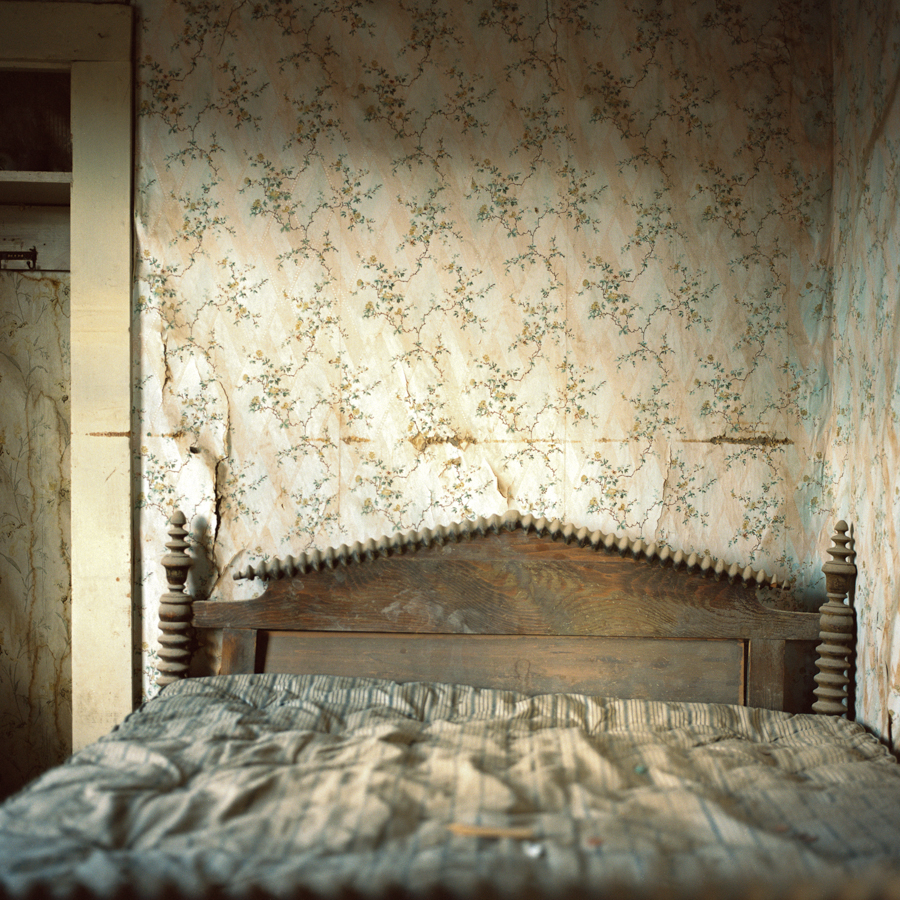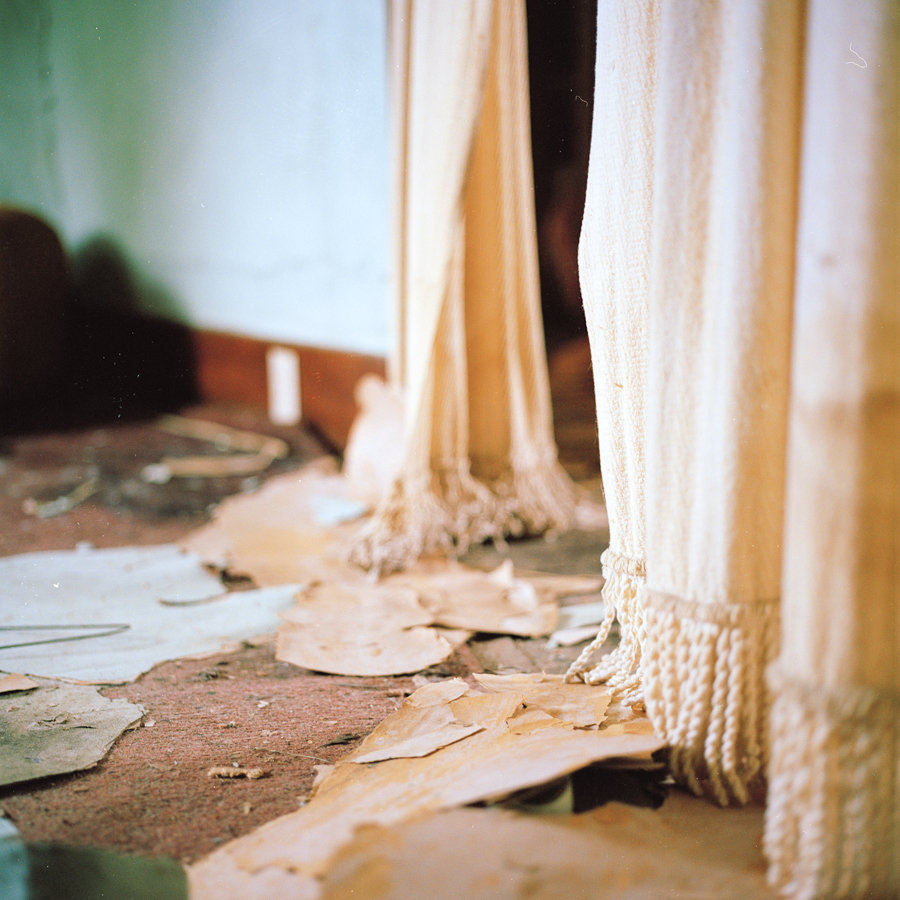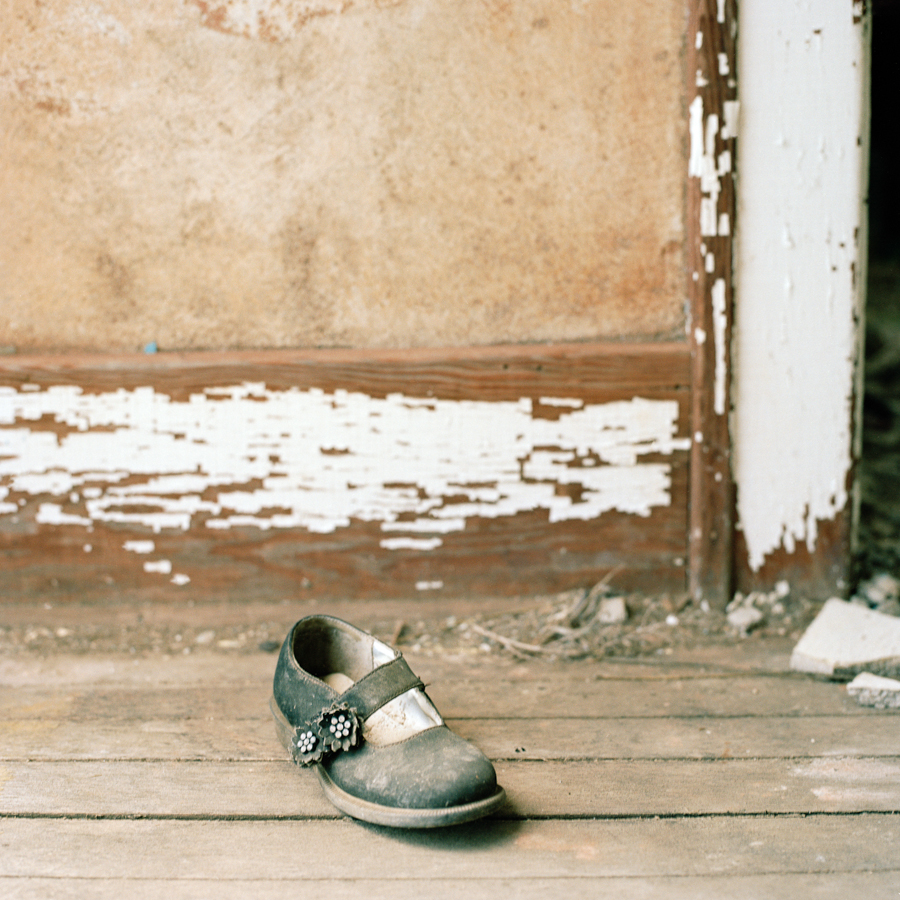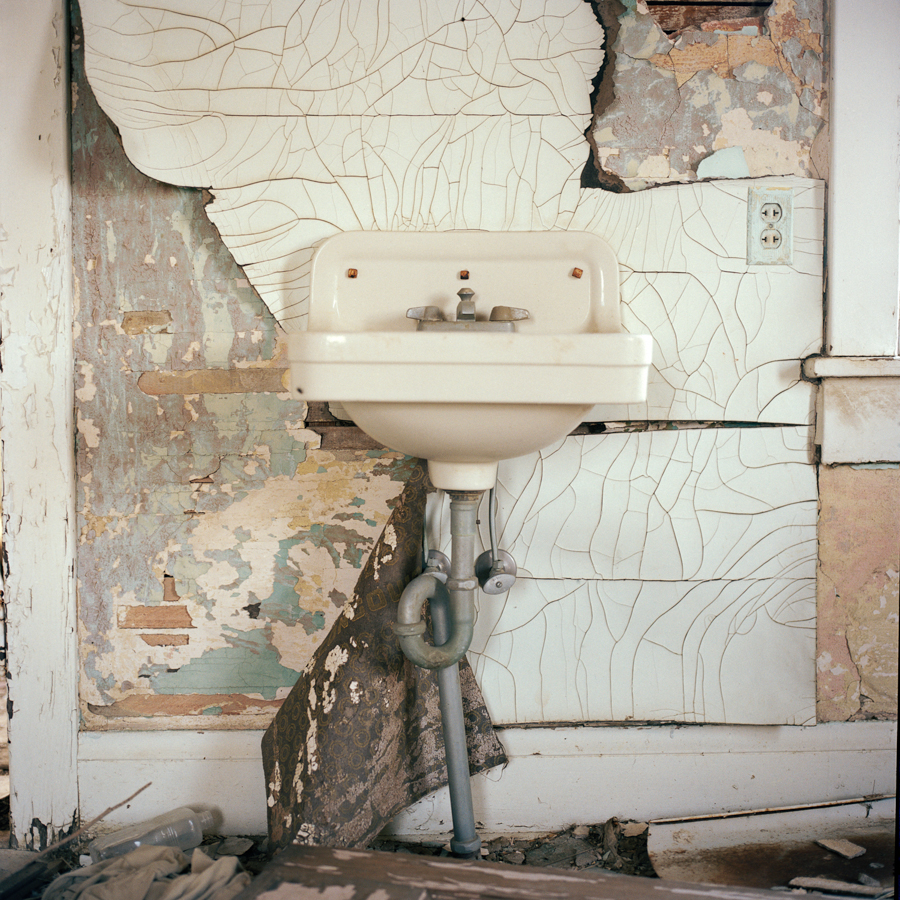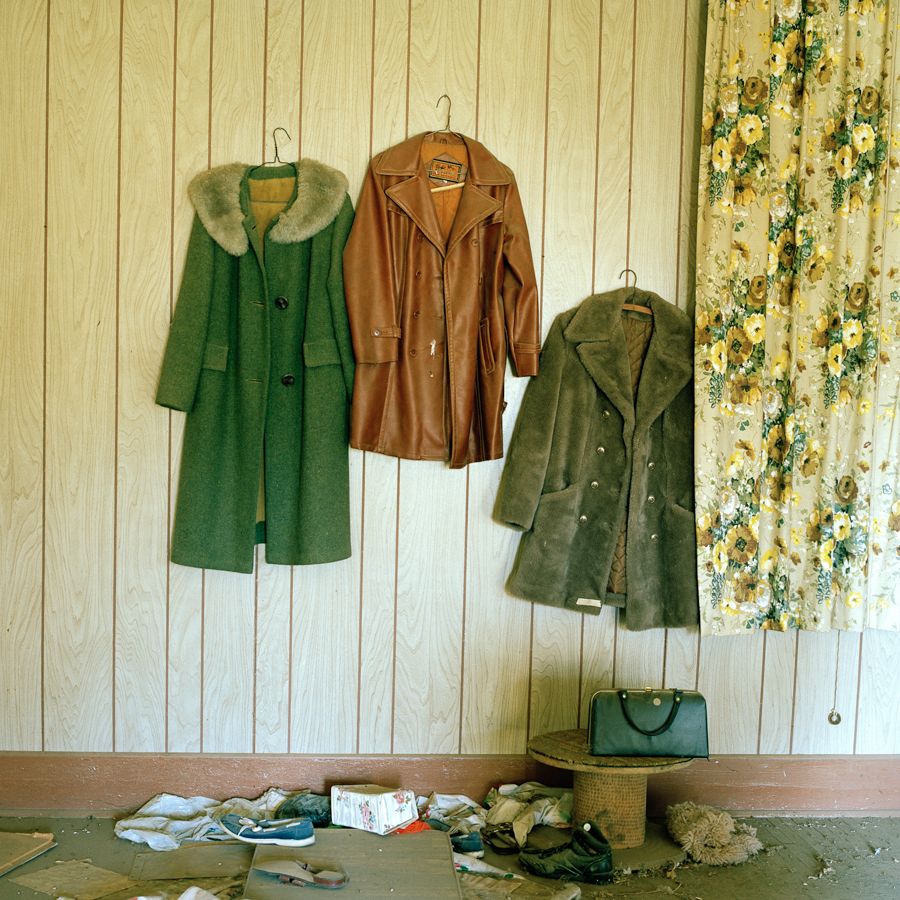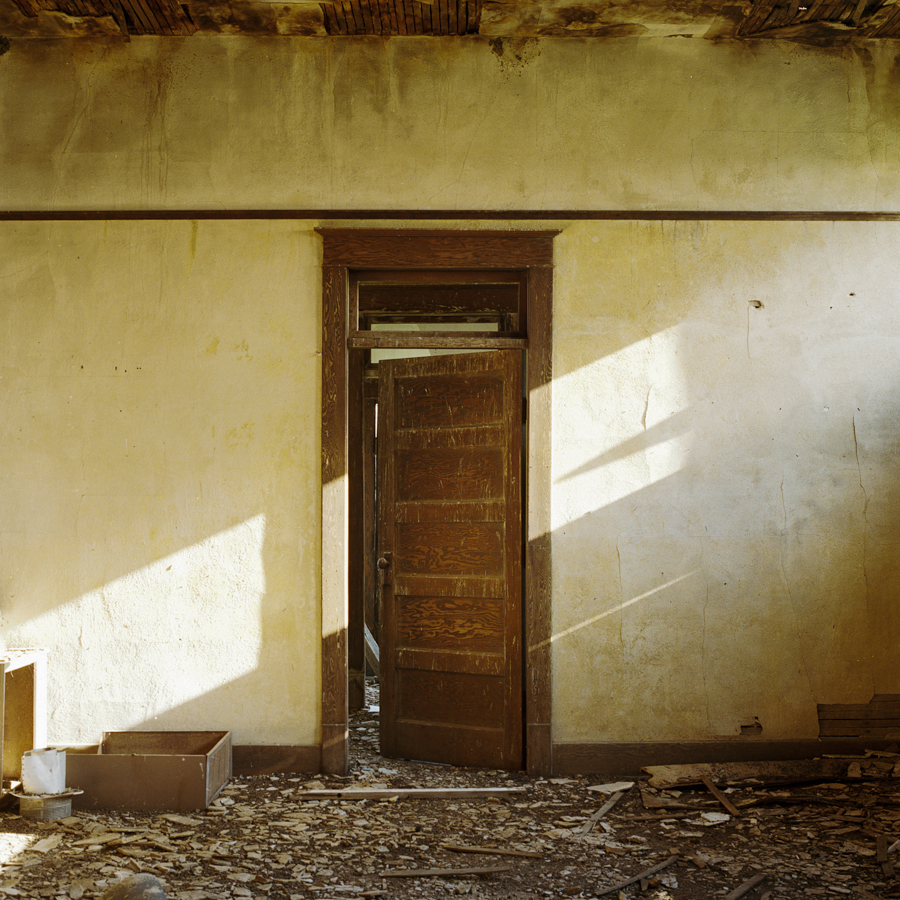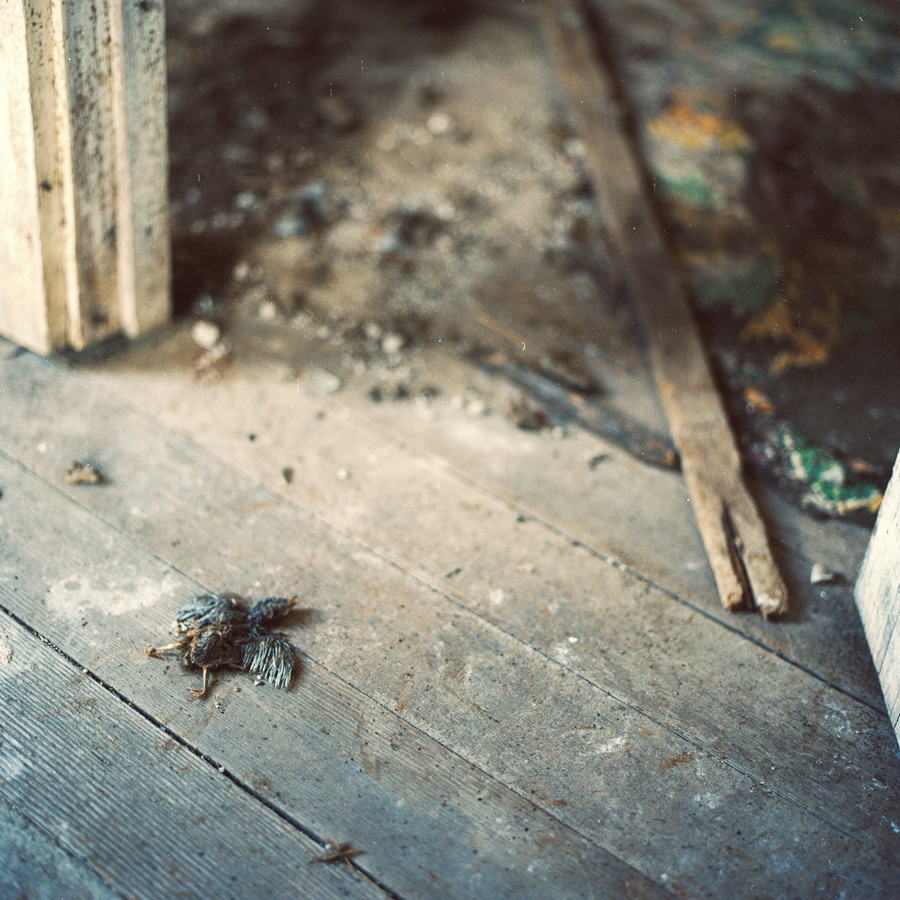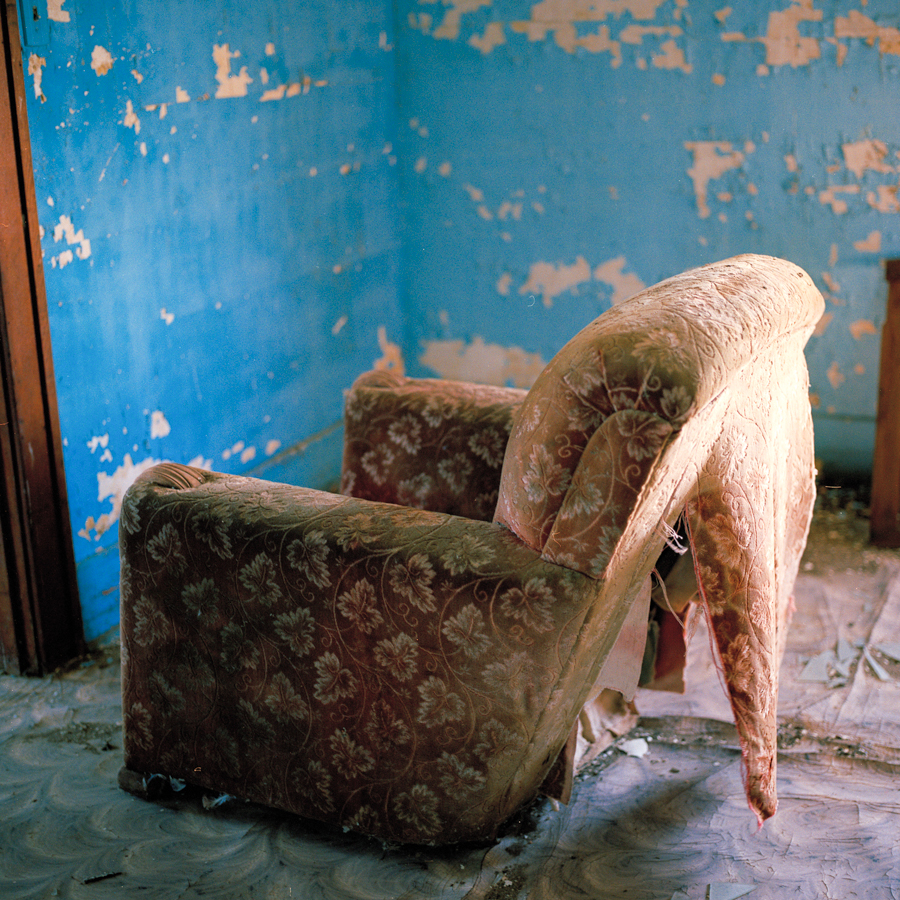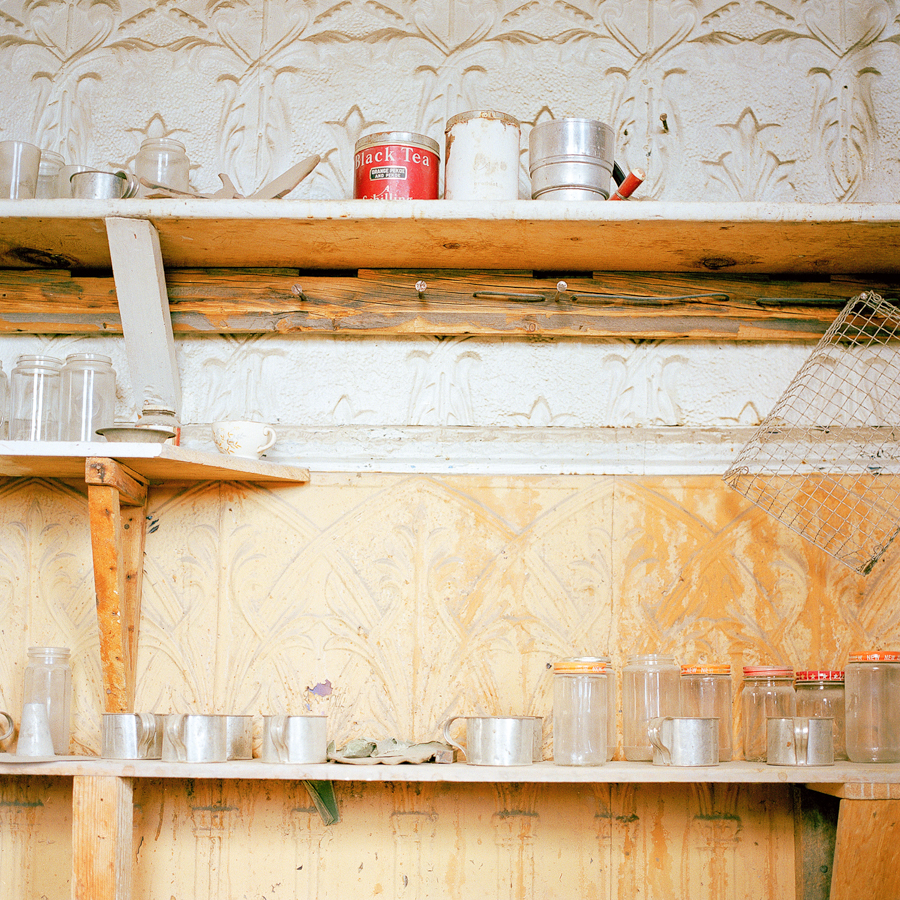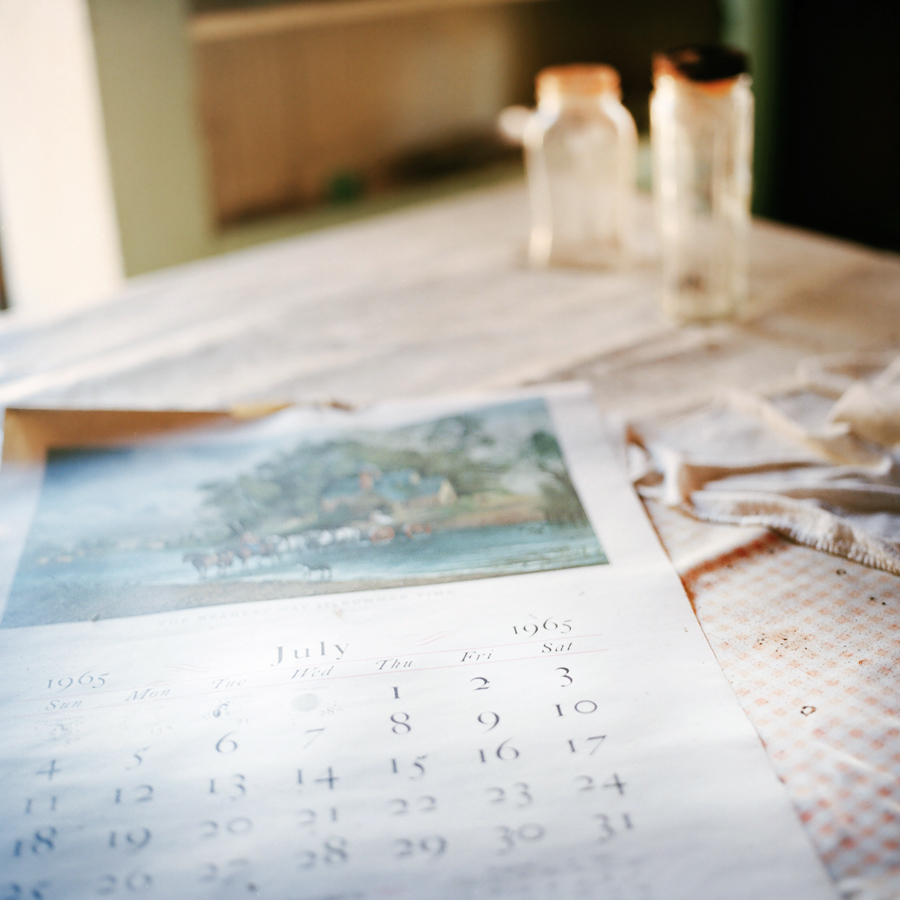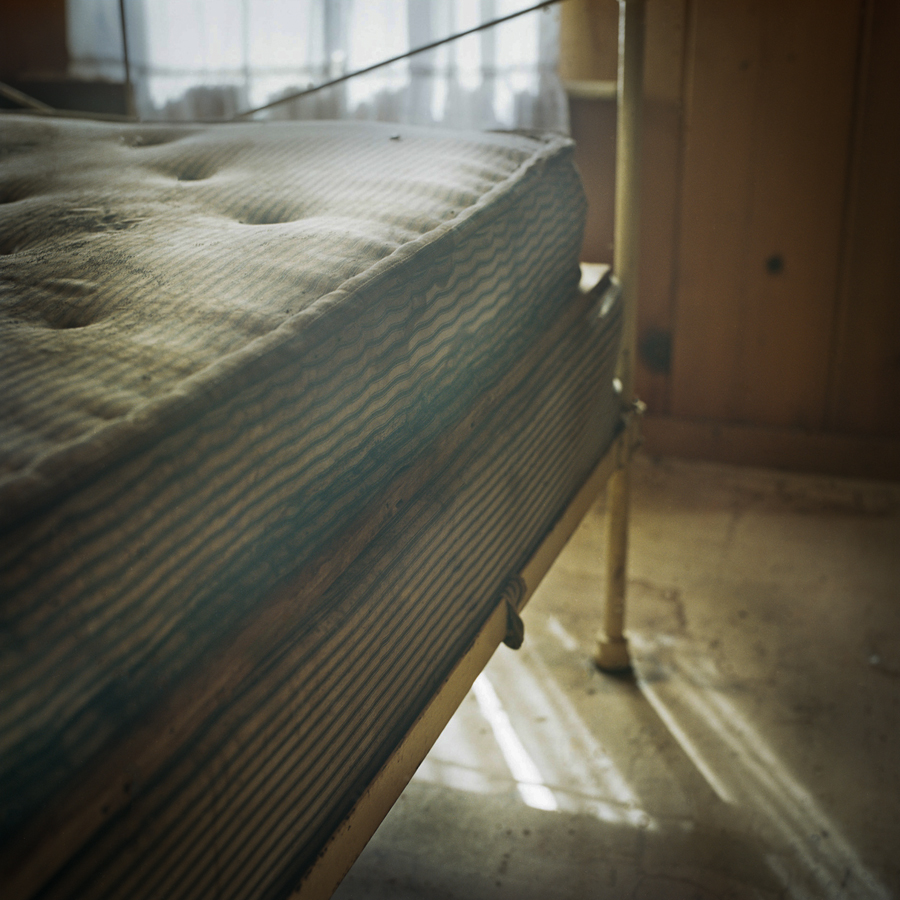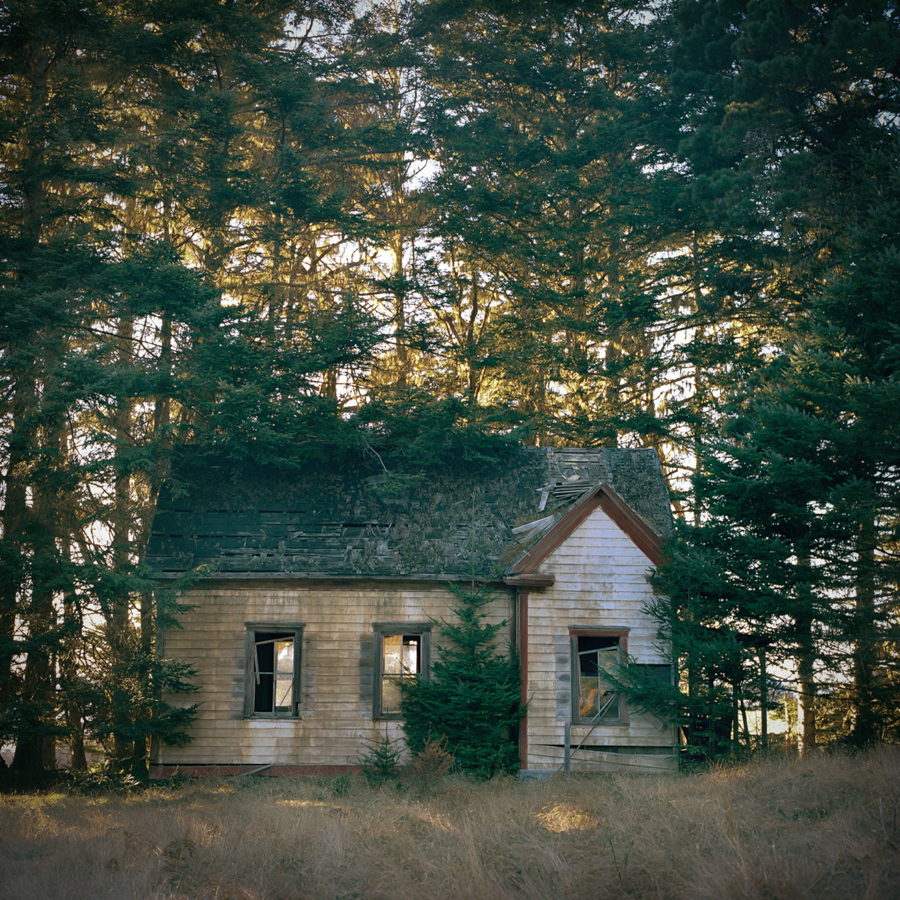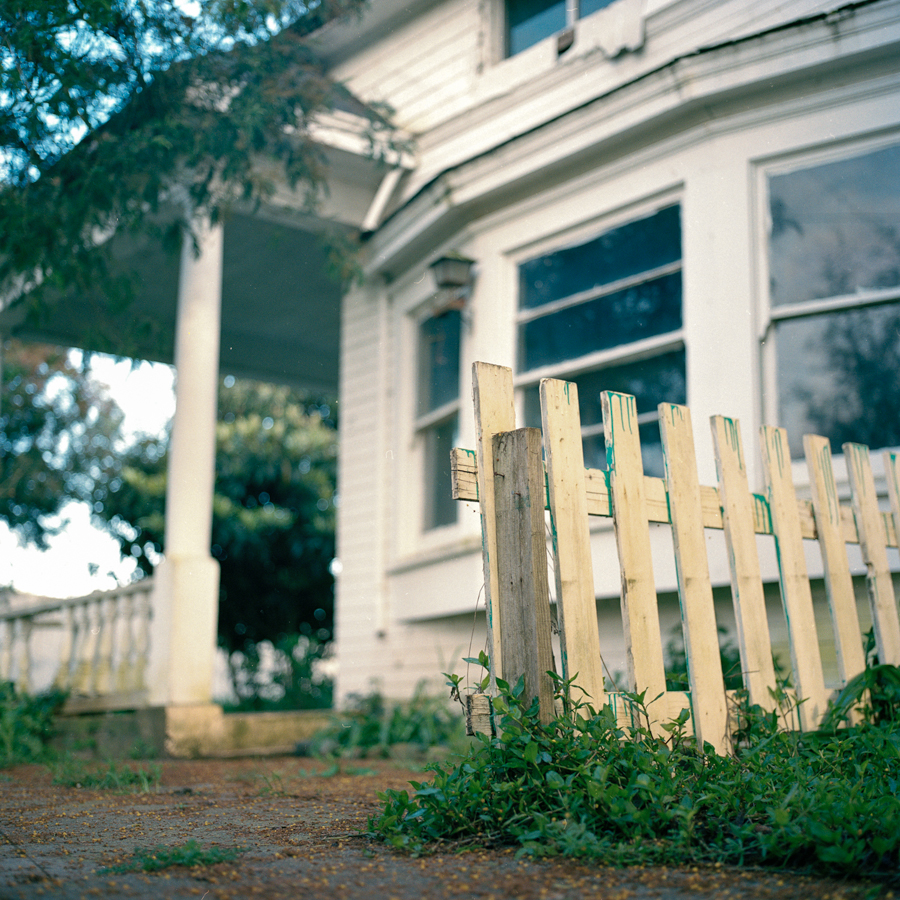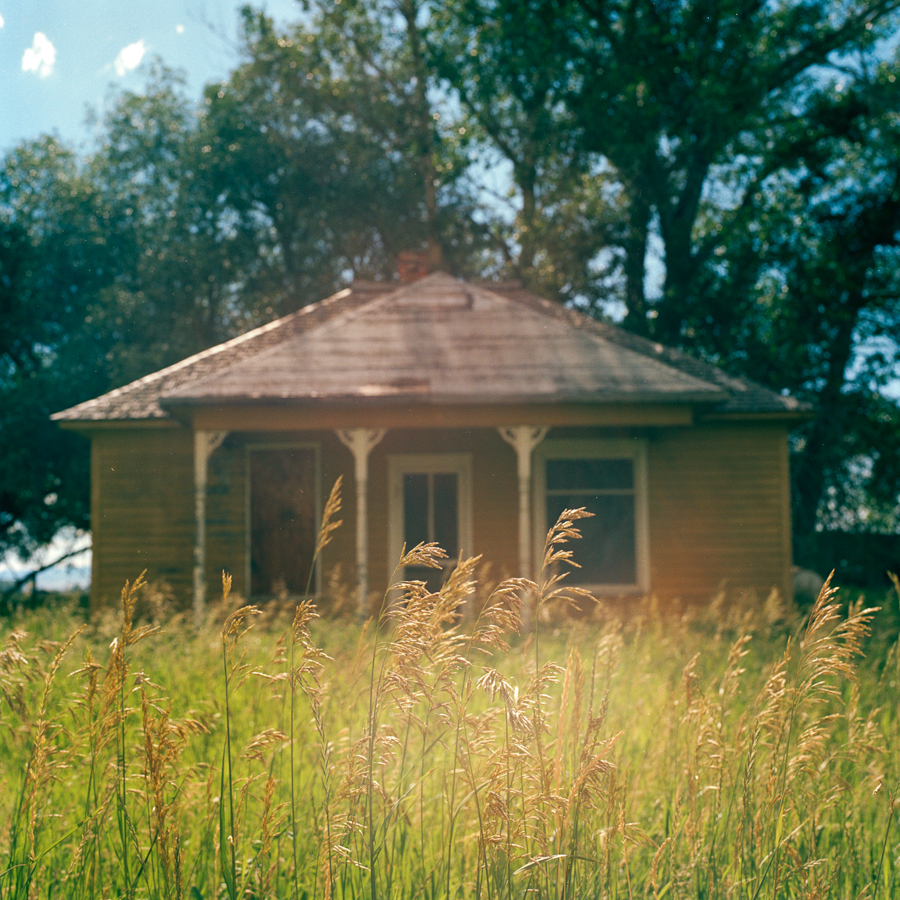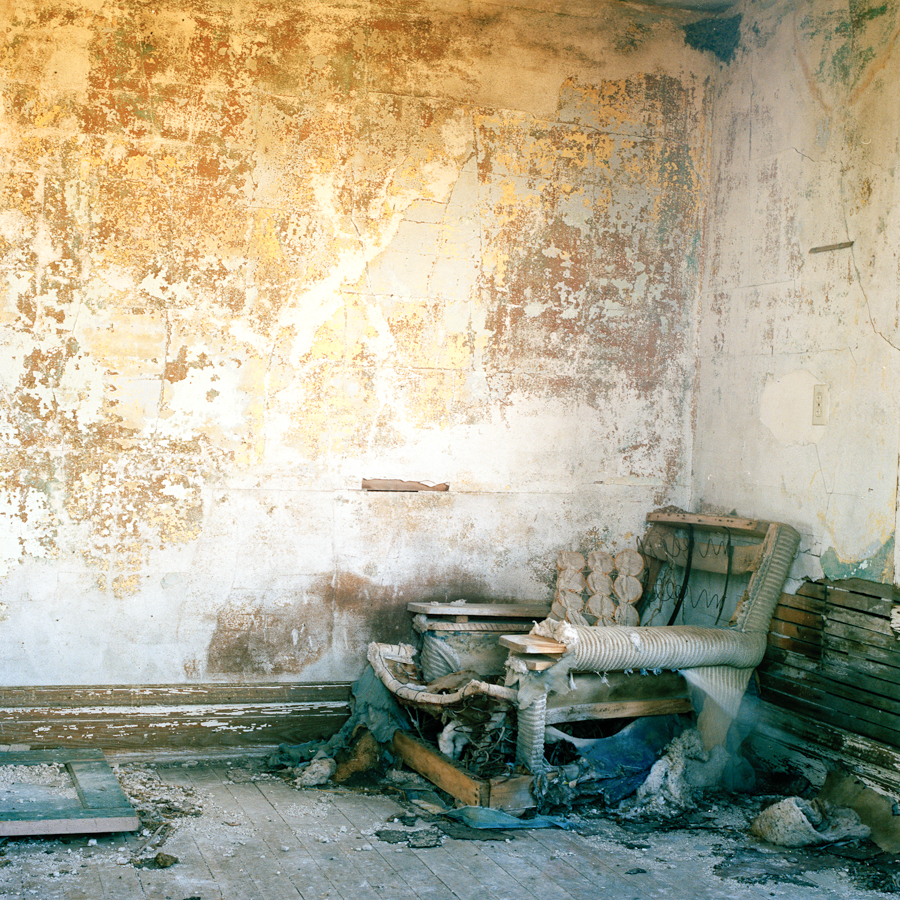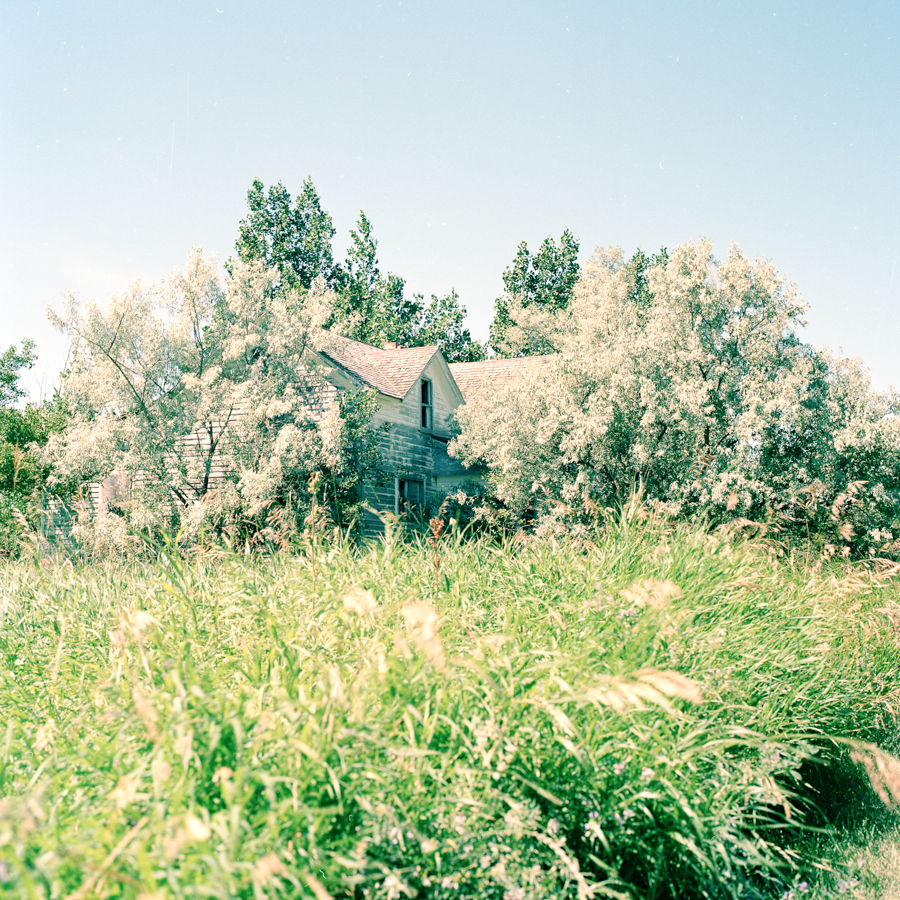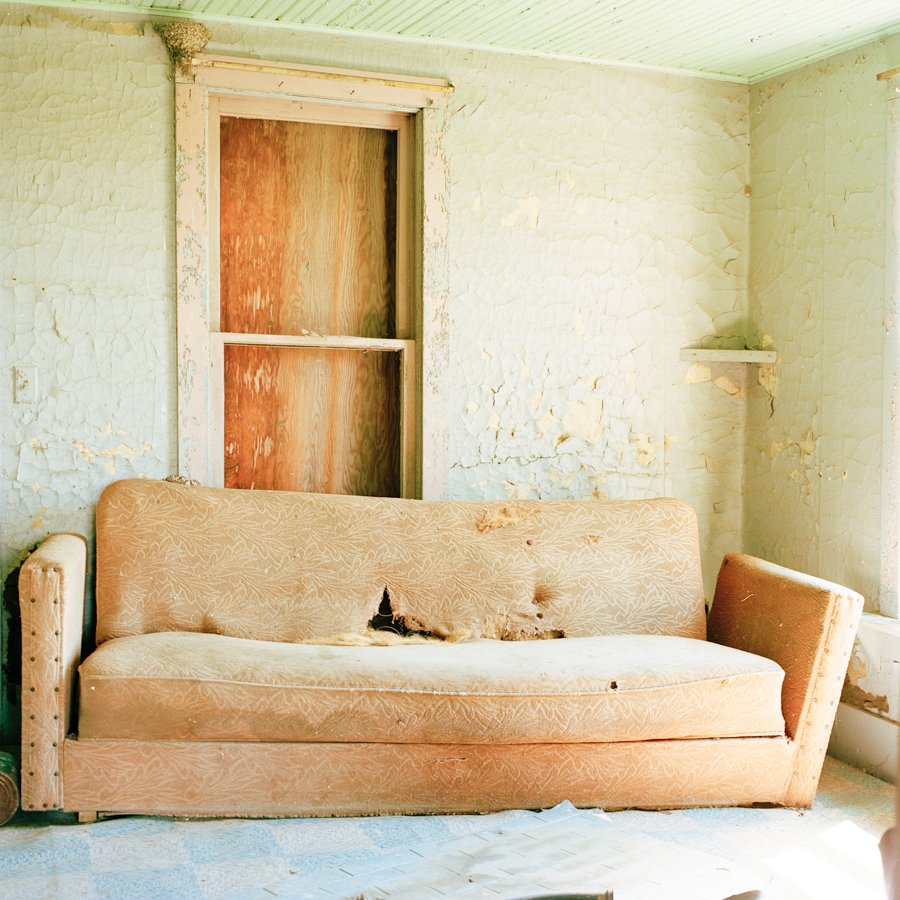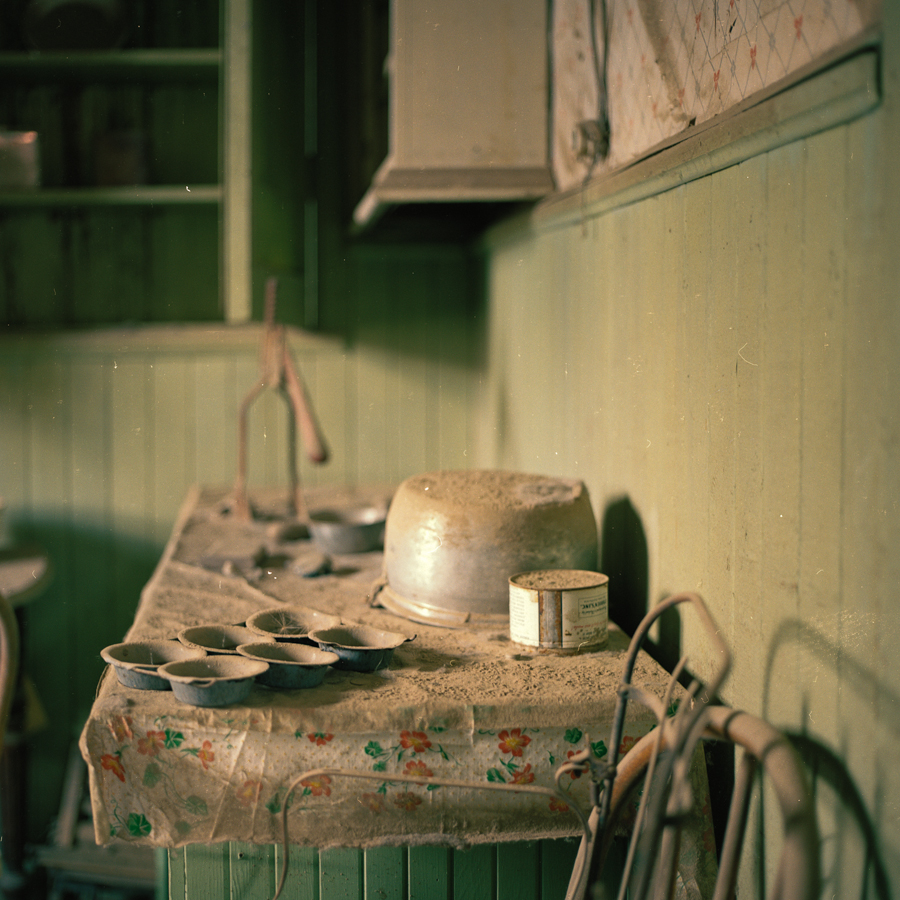These photographs depicting abandonment expose the vulnerability of our existence by facing decay and loss. Metaphorically speaking the places in this series symbolize what we fear most: futility, emptiness and defeat.
The images offer an opportunity to recognize the beauty within these emotional spaces and places and the beauty in an understanding that all things will eventually decay, decompose and disappear. Within my exploration of abandonment I am in turn exploring the fortifications and limitations of my own experience. These photographs depict the inevitable imperfections of the notion of existence.
Impermanence
I believe there is something silent speaking in abandoned and alone places in the world. There is a voice that cannot be heard, because there is too much to say. The construction of my metaphysical and physical being is analogized in the construction of buildings: both are designed to protect, impress and convey to the rest of the world that we are worth something. That we will by god be remembered and be important. However, here lies the truth: we are not, we may not. We are, like all other things that exist, impermanent, and like those things, our physicality will also decay and eventually disappear.
Using the inherent strength of expression true to the nature of photography, I have explored the notion of impermanence through the discovery and documentation of a world going through a distinct period of decay and neglect. Impermanence, whether of the body or spirit or perhaps a tactile thing like a building or bed, is the one thing we can count on, yet it is so often hidden underneath layers of uncomfortability as to withhold a sense of safety and importance in our everyday lives. Here, I seek to elicit the fear and emptiness surrounding thoughts of our own mortality. Our demise is real. This simple truth often remains hidden behind a door or swept underneath a rug; however, these images prove that there is immense beauty beheld within the process.
My Story
My parents are filmmakers. Throughout my childhood, as they traveled from place to place filming cultural documentary films, I was there with them. Traveling from a very young age, I was able to observe and experience the cultural, spiritual and visual diversity the world generously offers. As a result, I began to understand that any single experience I had would not only have multiple meanings, but would also lack the security of any single solid truth. Exposure to different societies and values, that varied greatly from my own helped me to gain a thorough understanding of multiple cultural perspectives.
My experience and understanding of cultural relativism began developing extremely early in my childhood. I began to grasp the inherent variables of “cultural normalcy” at an early age in the most basic aspects of living. For instance, when I was very young I remember comparing other young girls’ dresses to my own, noticing the differences in fabric, pattern, cleanliness and so on. As my young mind developed, more poignant differences began to come to mind. When I was 6, traveling throughout the Marquesas Islands, other girls my age were taking care of sometimes up to four or five younger siblings, cooking, cleaning and attending to them. At that age I was still a young imaginer, living without a care or concern in the world. It was clear that these children had a far different experience and understanding of childhood than I did. In my teenage years throughout Southeast Asia, predominately in Thailand, I observed women my age being sold as sex workers, others married and sometimes already caring for entire families. Clearly, this too was proof that the world is endless in its variety and relativity. Through direct experience I saw that life is fundamentally different for all and that no constant “truth” of humanity pertains.
My life experience and quest for understanding led me to obtain a bachelor’s degree in Philosophy and Religion at San Francisco State University. My study of philosophy was born from a determination to grasp the enormity of the world and the diversity of the cultures I had observed as a child. I sought to understand some of the “big questions” in life, asking myself: Why am I here? How should I live? Why do we suffer? Throughout my years of studying I learned that there were multiple answers to each one of these questions. I eventually realized that because so many answers existed, there were ultimately no answers and therefore no singular understanding. Coinciding with this realization, I experienced an overwhelming existential crisis at the end of my undergraduate studies. The crisis resonated with the core of what I had learned and knew from life, and thus was, in a sense, foundational. Knowledge proved to be an illusion, since the more I “knew,” the more I realized I understood nothing. The years spent studying in hopes to expand my understanding of human existence, proved disappointing; none of it provided an explanation. Nevertheless, I did come to understand the notion of impermanence. Within a world without any solidity of meaning, there is one underlying truth after all: we were born and we will die.
Conceptualization
My work continues to observe and document the absence of absolute truth. There is no simple definition of childhood, no definite answers as to why we suffer and no universal reasons for why or how to live. As I describe below, photographing in abandoned buildings and documenting dismissed artifacts allows me to explore the multiple aspects of impermanence as they relate specifically to my existence. Sharing this photographic exploration with others, I call them in to examine the uncomfortable truth that existence ends. Depicted here is what I have learned is the one truth: impermanence.
It is in the corners and far rooms of these abandoned places where I find the most intimacy. The objects that were once intentionally acquired and used represent pieces of our identity, picked to represent an aspect of ourselves. Investigating abandonment allows a glimpse as to how ownership and identity are linked ultimately to loss, destruction and corrosion. Through exploring the buildings I am exploring the interior of my own existence. There is an inevitable sense of danger that whispers, do not look there. It is there, in these quiet and dust covered places that we find the troubling aspects of our own existence, the ones we have so often tried to ignore and forget. Through my work I have the opportunity to personally explore the reality that, like these buildings and objects, I will also decay and disappear – having been pulled back into nature, from which I was created.
Depicted in these images are things that once held enormous meaning. The interiors once had the smell of new paint or coffee on the stove. People lived here; people worked long hard days to pay for a home, own a shop or run a school. The couches, once soft and new, windows clean and shiny are now left broken and moldy. What is left is peeling wallpaper, falling boards, displaced bricks and a book or a kettle strewn here or there. Within the decaying walls and broken windows there lie a graveyard of forgotten importance. Everything in these buildings was once an important part of someone’s life – something that was lovingly cleaned or polished, painted or wiped. These places were people’s identities – they were the places that people came to for comfort. Now, nobody cares, these places are forgotten, meaningless – empty. Society has chosen to make them invisible for fear of what they represent. Hidden, though, within the imperfections there exists so much beauty.
Being where others will not go, I am captivated and intrigued by the inherent danger and mystery of forbidden places. My urgency to understand the walls and interiors of deserted spaces is synecdochal for an interest in understanding danger and fear and how they relate to my notion of existence within the walls and interiors of my own body and mind. In accepting the reality of our own impermanence and setting aside fear of pain, defeat, loss and loneliness, we can recognize the beauty that lives within those emotions and discomforts. It is this place, that I document in my images. As an artist I have pulled these emotional and physical spaces together to create a narrative about the beauty of existence as well as the beauty found within limitation, impermanence and mortality.
The journey is not solely a personal one; as an artist I invite the viewer to observe and acknowledge the places that stir up feelings of discomfort and angst within. Each image demands you to sit with the discomfort and intentional distance usually given to these forgotten places. Our society urges us to keep hidden the unpleasant aspects of living. Proving that these places do exist in the world, in America, in California, even in our own back yard, tells us that society’s version of reality is false and that life is not perfect or indestructible. As a commentary on the imperfection of the American notion of existence, these images present an opportunity to change our ideas about life and death and any other false stories we may be telling ourselves around our notion of existence. I am proclaiming that there is in fact something to learn and some beauty to experience here in the silence. [Official Website]



